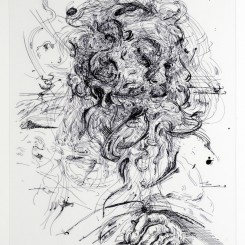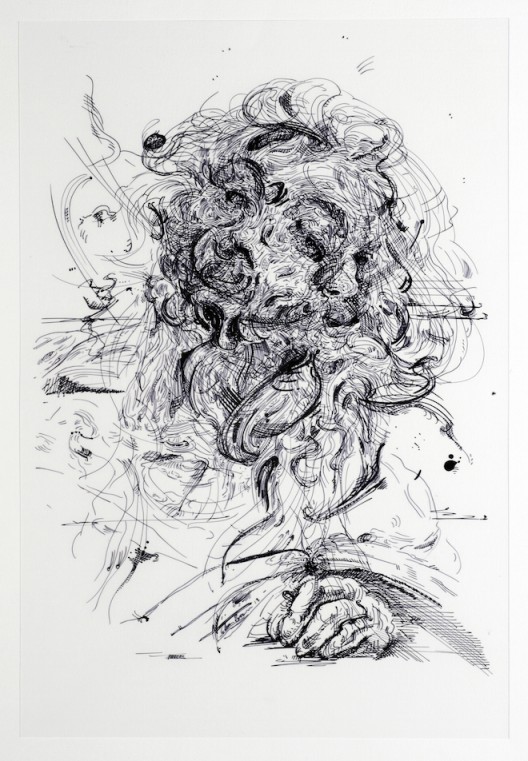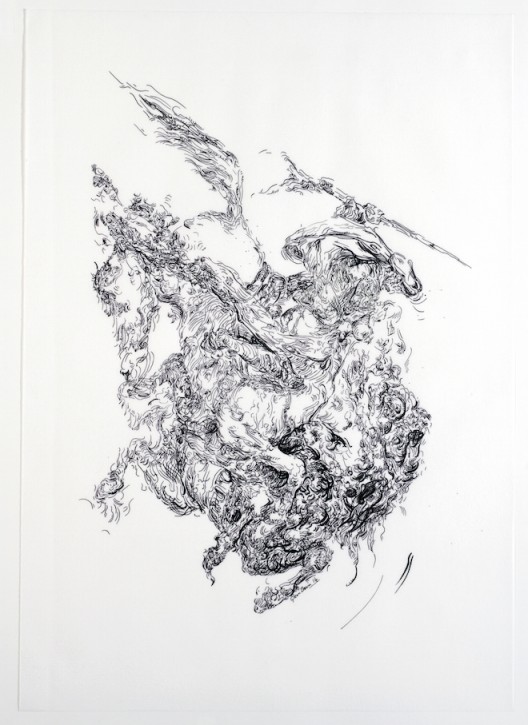Glenn Brown “Dessins”
Galerie Max Hetzler (57, rue du Temple, 75004 Paris) Sept 5—Oct 10, 2015
Drawing does not need to be reinvented, but practiced. It is a discipline: it requires reiteration, whether in preparatory sketches for paintings or just doodling. The word “design” is related to the French word for drawing, “dessin”, but also to “designate”. It can be contingent or specific. It encompasses the extreme refinements of Picasso’s neo-classical homages to Ingres and the hybridized writing/marking of Belgian poet-artist, Henri Michaux (1899-1984). In artistic practice, it offers the most immediate and thus convenient connection between mind, hand and line, whether for forms or words. A drawing can easily be made on a flimsy scrap of paper and perhaps this, in the Western realm, is the reason it has historically been undervalued in comparison, for instance, with oil painting.
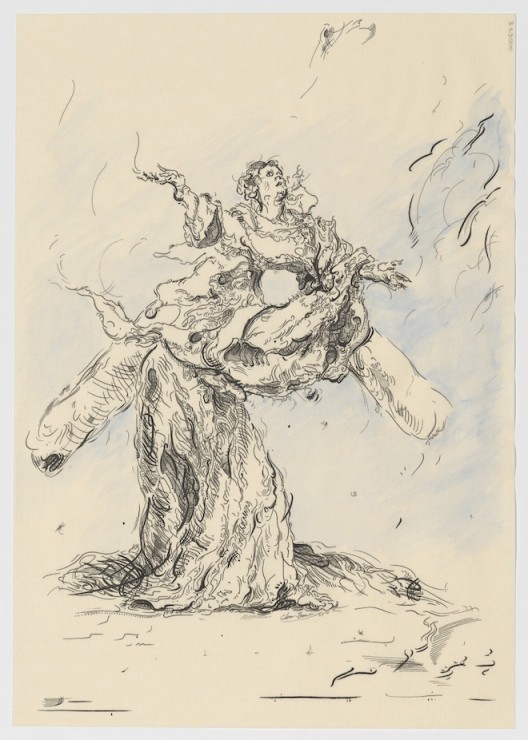
Glenn Brown, “Drawing 8 (after Murillo/Murillo)”, Indian ink and watercolour on paper, Pergamenata Natural, 50 x 34,7 cm, 2015
(Courtesy the artist and Galerie Max Hetzler Berlin | Paris. Photo: Prudence Cummings Limited)
Glenn Brown (b. 1966, England) is renowned for his painting, his transformations of mass-produced images of famous historical works, examining and exploring the source material through undermining, corrupting, parodying, and transforming the canonical into “cartoons”—this word itself originally designating the outline designs used to transfer drawings to canvasses and fresco walls. Brown reminds us that even at the moment of creation, God and Adam are cartoons.
In a fascinating exhibition at Max Hetzler Gallery in Paris, Brown reveals a painter (and sculptor of paint) that has recreated himself by turning his hand to drawings on paper and polypropylene. Some 24 images derived from the work of master draughtsmen, including Giovanni Battista Tiepolo, (1696-1770), Françoise Boucher (1703-1770), Delacroix, Jean-Baptiste Greuze (1725-1825), Eugène Delacroix (1798-1863),
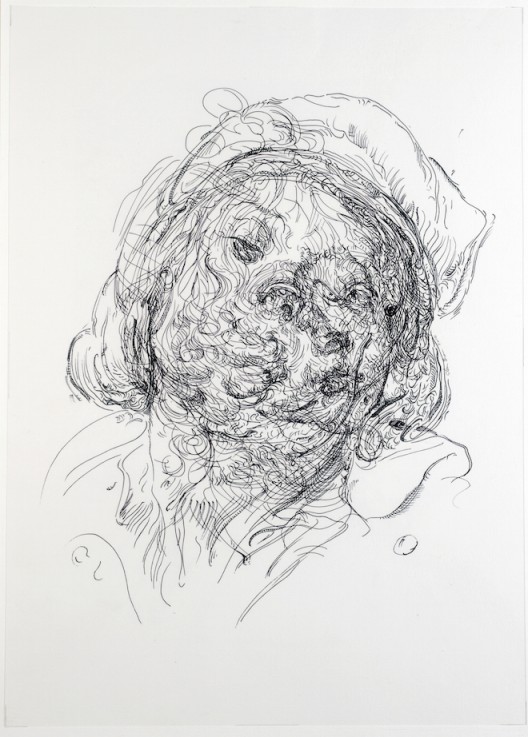
Glenn Brown, “Drawing 40 (after Greuze/Jordaens)”, ink on polypropylene over Indian ink on paper, 50 x 36 cm, 2014 (Courtesy the artist and Galerie Max Hetzler Berlin | Paris. Photo: Prudence Cummings Limited)
Brown makes us look freshly at images long assumed too familiar, but he is frankly humble in response to comparisons with their artists. His lines, though, and the way they control space and conjure movement, are compelling. The images shimmer between figuration and abstraction, transparency and materiality, the hand and the mechanical, suggesting both manga-like stylization and dry-point etching (minding this writer of work by Diann Bauer). There is a magically dizzying mix of epochs and style, absorbing and agitating, and deliberately unresolved. After all, drawing is an infinitive.
When asked whether his newfound interest in drawing has changed his painting practice, Brown was adamant that drawing had fundamentally changed how he approached painting and that he can no longer return to how he painted previously.
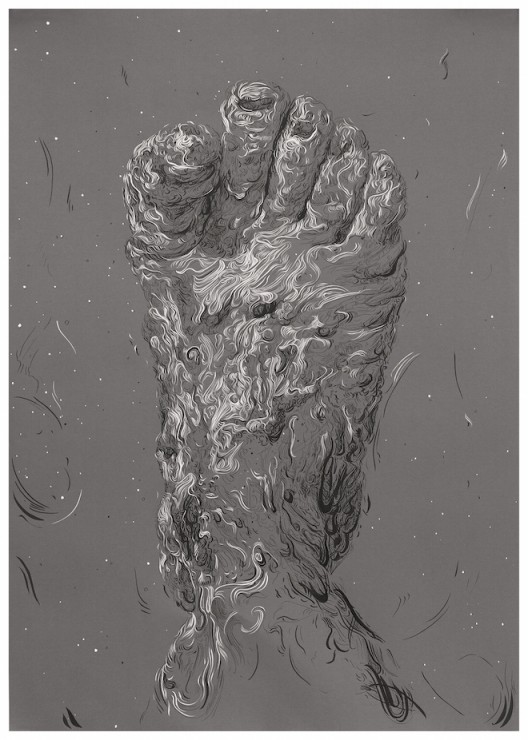
Glenn Brown, “Drawing 27 (after Menzel)”, Indian ink and acrylic on paper, Canford Gun Metal, 84 x 59 cm, 2015 (Courtesy the artist and Galerie Max Hetzler Berlin | Paris. Photo: Prudence Cummings Limited)
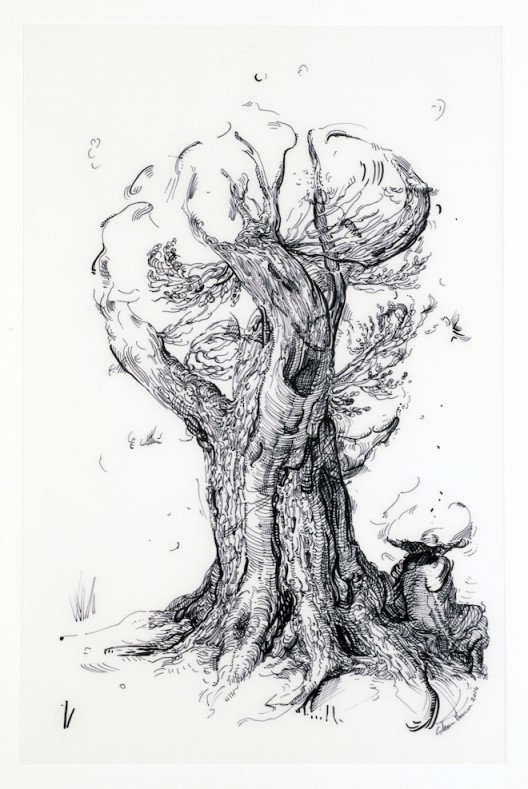
Glenn Brown, “Drawing 31 (after De Gheyn II)”, ink on polypropylene, 37 x 24,1 cm, 2014
(Courtesy the artist and Galerie Max Hetzler Berlin | Paris. Photo: Prudence Cummings Limited)
